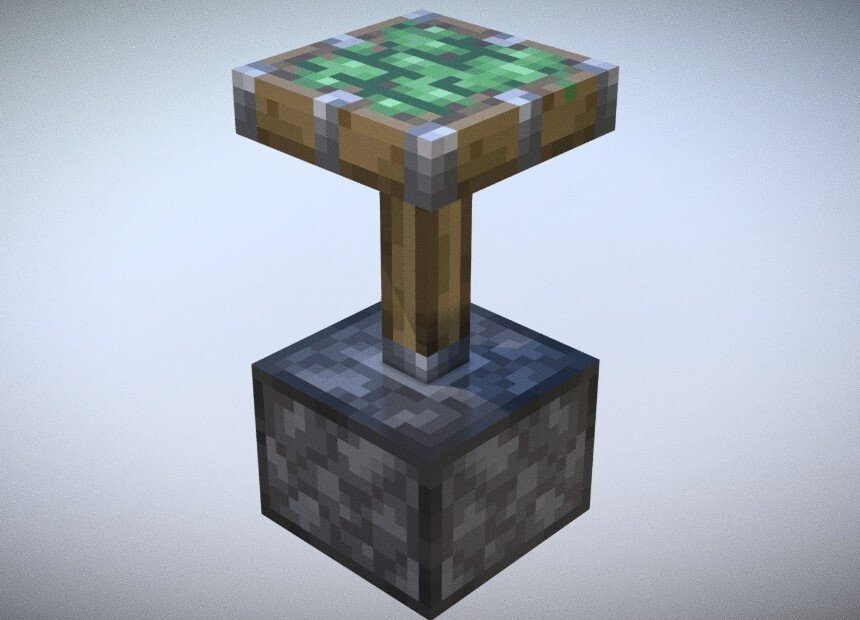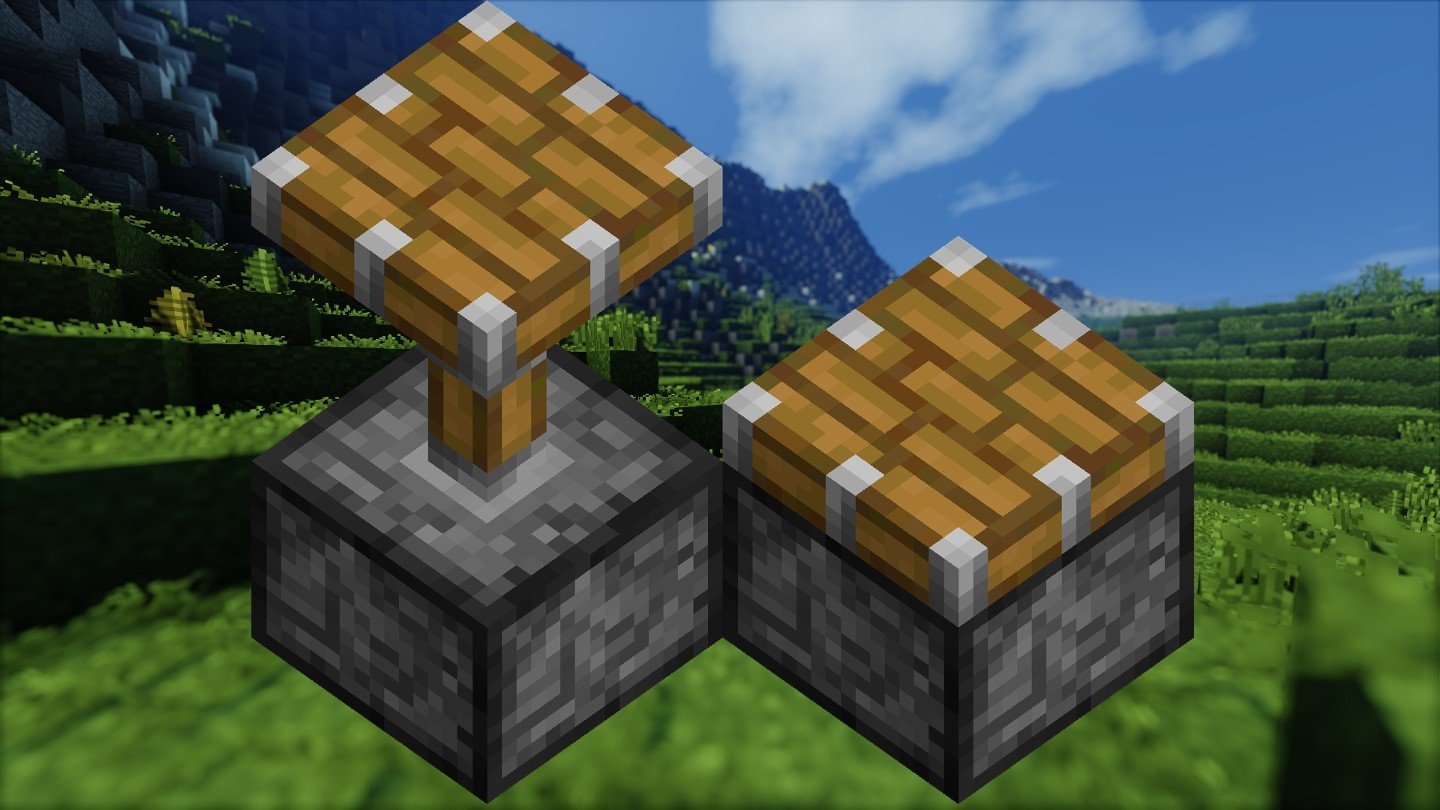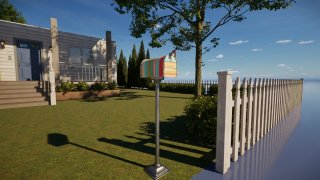Piston in Minecraft opens up new possibilities for players, enabling the creation of intricate structures, automated farms, traps, secret doors, and much more. This unique block was added in Beta version 1.7 back in 2011 and has since become an essential part of virtually any base or home.
In our article, we’ll explain how the piston works, the resources needed to create the mechanism, and several ways to use this device.
What is a piston?
 Image: Ensigame
Image: Ensigame
It is a mechanism that moves blocks, items in front of it. It is available in the game on all platforms, including Java/Bedrock editions. The thing consists of two visible parts and one invisible part:
- The main stationary part, the box.
- The piston head, which moves forward or backward when activated.
- The third component, invisible, is called "block 36", responsible for technical operations.
The sticky piston works the same way, except it has slime on the moving part, allowing the device to push forward and pull back.
 Image: Ensigame
Image: Ensigame
A piston is one of the mechanisms that requires activation using redstone dust, a button, a lever, or a pressure plate. When a signal is provided, it extends; when the signal is lost, it retracts.
The device has limitations. It cannot move technical blocks, other pistons, enchanting tables, obsidian, portals, chests, jukeboxes, mob spawners, beehives, furnaces, dispensers.
 Image: hpnonline.com
Image: hpnonline.com
However, it handles regular blocks and mobs without any issues in typical usage scenarios. For example, in a sugar cane farm, the thing allows for automated item collection.
The device can push forward no more than 12 blocks in a row. The sticky piston has the same strength but can only pull back one block.
We have outlined the key points of how the device works. Let's move on to crafting the item.
How to craft piston in Minecraft?
 Image: sketchup.com
Image: sketchup.com
To craft a standard variant, gather the following materials:
- 4 cobblestones;
- 1 iron ingot;
- 1 redstone dust;
- 3 wood planks (any type).
Cobblestones, wood are abundant and easy to collect from nearly any biome. Iron ingots require more effort; players must smelt iron ore in a furnace or craft an ingot from 9 iron nuggets, available only in the Java Edition. Redstone dust can be mined from redstone ore using an iron pickaxe or better.
All ingredients are placed on the crafting table in the following pattern:
 Image: Ensigame
Image: Ensigame
Let's not stray too far and immediately explain how to make the sticky variant of the mechanism. For this, the user needs a regular piston, a rare item, a slimeball. These can be obtained from slimes, which spawn at night in swamps and appear in dungeons, mines.
The item is crafted again on the crafting table. The necessary components are arranged in this sequence:
 Image: Ensigame
Image: Ensigame
Additionally, three sticky pistons can be found in jungle temples and five more in Ancient Cities. In both locations, they are part of puzzles, so it’s always beneficial to thoroughly explore the area.
How to use piston in Minecraft?
 Image: sketchfab.com
Image: sketchfab.com
Place the device horizontally or vertically, with the wooden part facing the object you want to move. This item will start working when it receives an activation signal. There are several ways to do this:
- Button: when pressed, the mechanism activates and returns to its original position.
- Lever: the piston remains active while the lever is pulled.
- Pressure plates: responds to players, mobs, or items. The wooden part of the device extends while the plate is pressed.
- Other redstone-powered devices: Redstone dust needs to be placed on the block behind the piston.
 Image: Ensigame
Image: Ensigame
In the first two cases, switches are placed on a block next to the mechanism or on its rear surface. To activate the device, the player needs to right-click on the activator.
A sticky piston in Minecraft is used similarly. To understand why such a device is necessary in the game, let's look at several use cases for the item.
Hidden Door
 Image: Ensigame
Image: Ensigame
One of the simplest ways to conceal a home from prying eyes. The downside of this design is that the external switch is visible, making the dwelling easy to uncover. However, you can carry the button in an inventory and place it as needed.
Automatic Door
 Image: Ensigame
Image: Ensigame
Tired of opening doors? Create a simple yet convenient mechanism with pressure plates, allowing the passage to automatically open in front of the player and close after a few seconds.
 Image: Ensigame
Image: Ensigame
Strangely enough, the wooden part of the piston resembles a tabletop in texture and can fit quite well into an interior. The only drawback of such a table is that nothing can be placed on it.
Trap
 Image: Ensigame
Image: Ensigame
No creature caught in such a trap will be able to escape. Pressure plates are placed in the center, with a ceiling above and pistons nearby that activate when stepping on the switches. A player caught in such a trap cannot jump out due to the blocks overhead, nor can they escape because they will constantly activate the barrier in front of them.
Hidden Trap
 Image: Ensigame
Image: Ensigame
Whether you're playing on a PvP server or in single-player mode, this trap is equally useful against other players wanting to destroy your home and against mobs. A tripwire hook activates sticky pistons that move blocks over lava or a deep pit. A pressure plate can also be used as a switch, but it is more noticeable and quickly reveals the trick.
Automatic sugar cane farm
 Image: youtube.com/@X_Minecraft2023
Image: youtube.com/@X_Minecraft2023
The most complex structure, but it significantly simplifies harvesting. All the player needs to do after construction is to periodically check the chest and collect the sugar cane. The principle is simple: when the cane grows to a certain height, an observer detects it and sends a signal to the pistons, which extend and push the upper part of the plant onto a minecart with a hopper. The hopper then delivers the resource to the storage chest.
A similar method can be used to harvest bamboo.
We hope this guide has been useful for our readers and that it has helped you craft a piston in Minecraft and understand how the device works.
Main image by Ensigame


 Maxim "Sensei Mori" Tomilov
Maxim "Sensei Mori" Tomilov


















0 comments